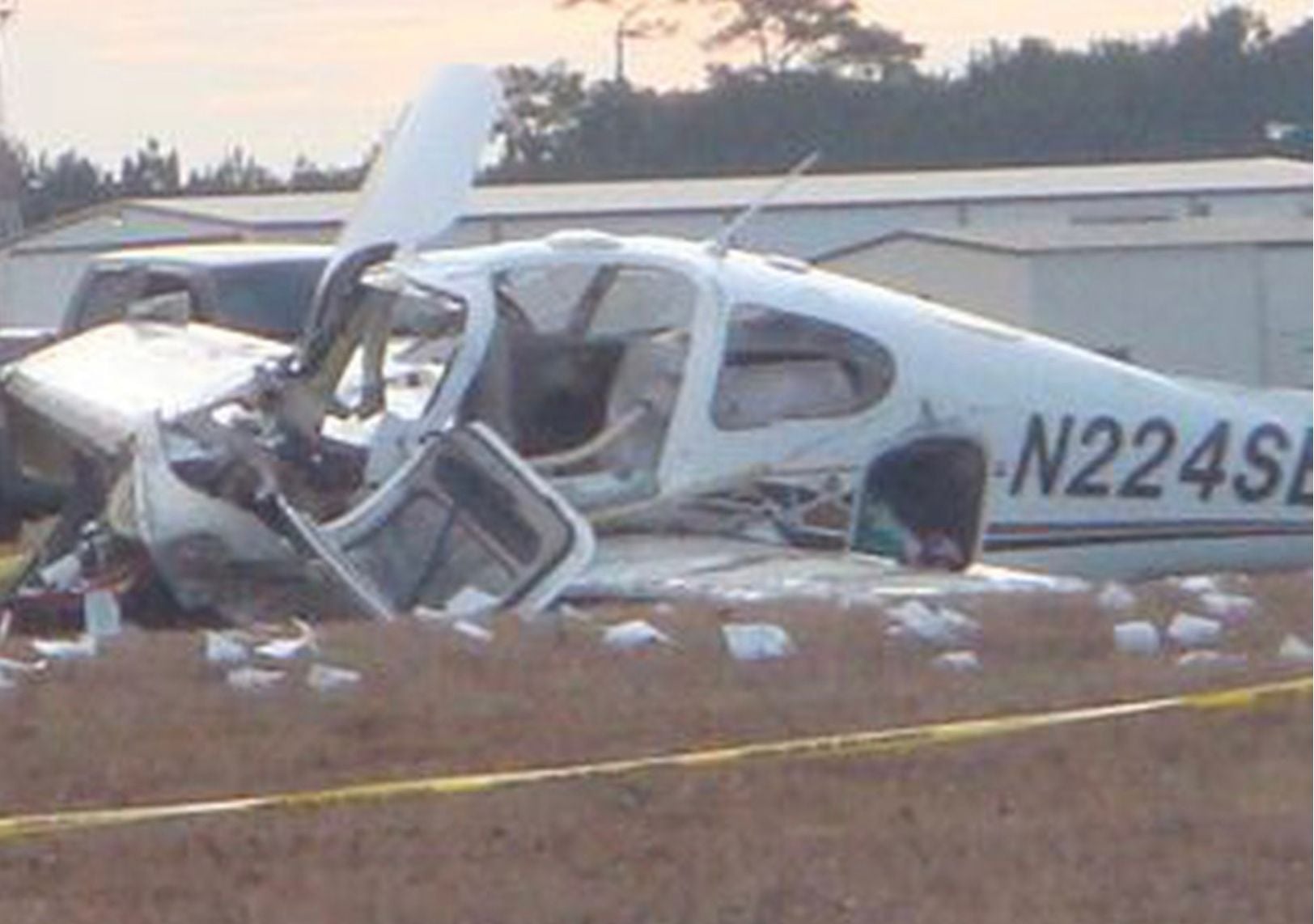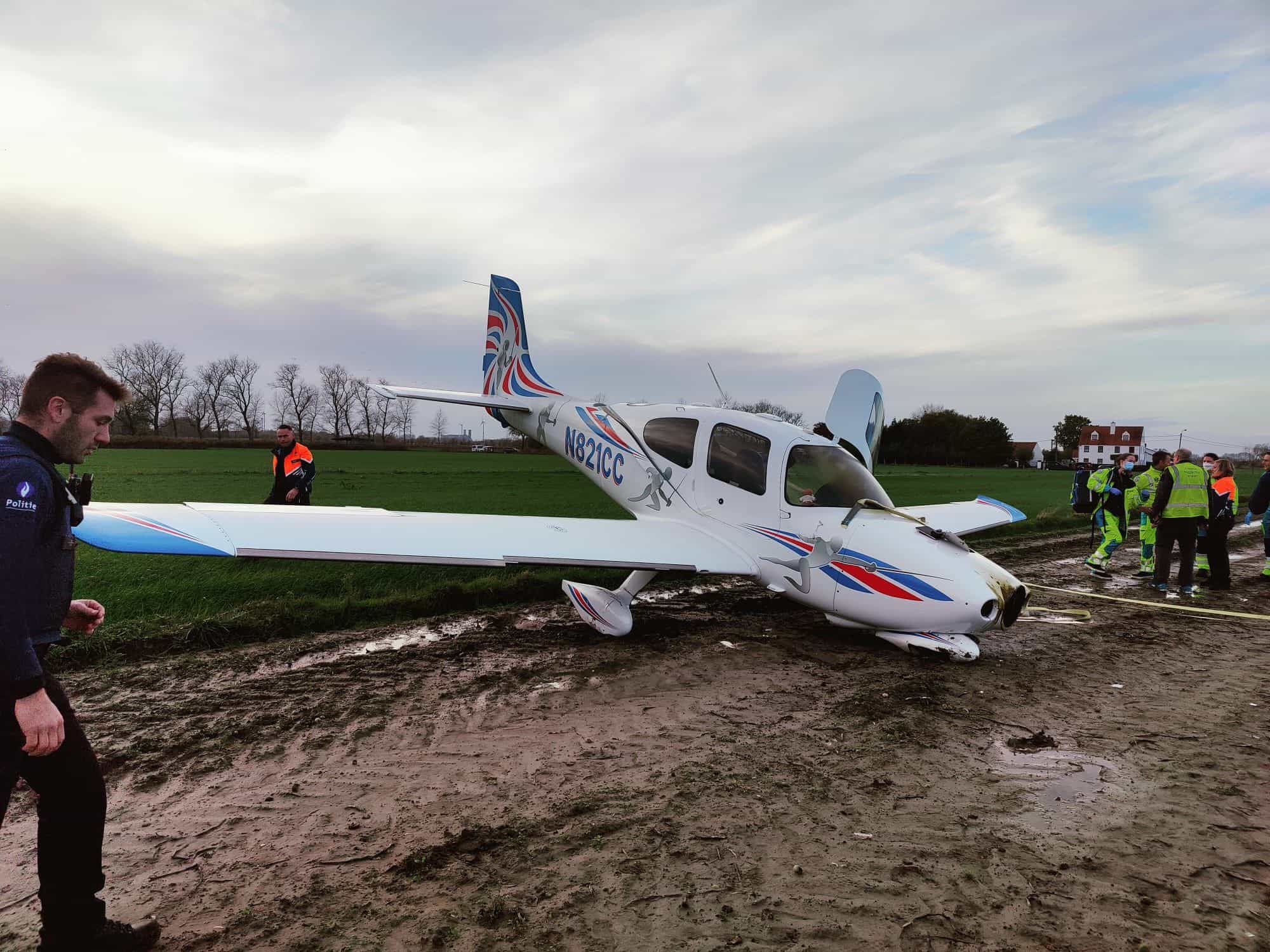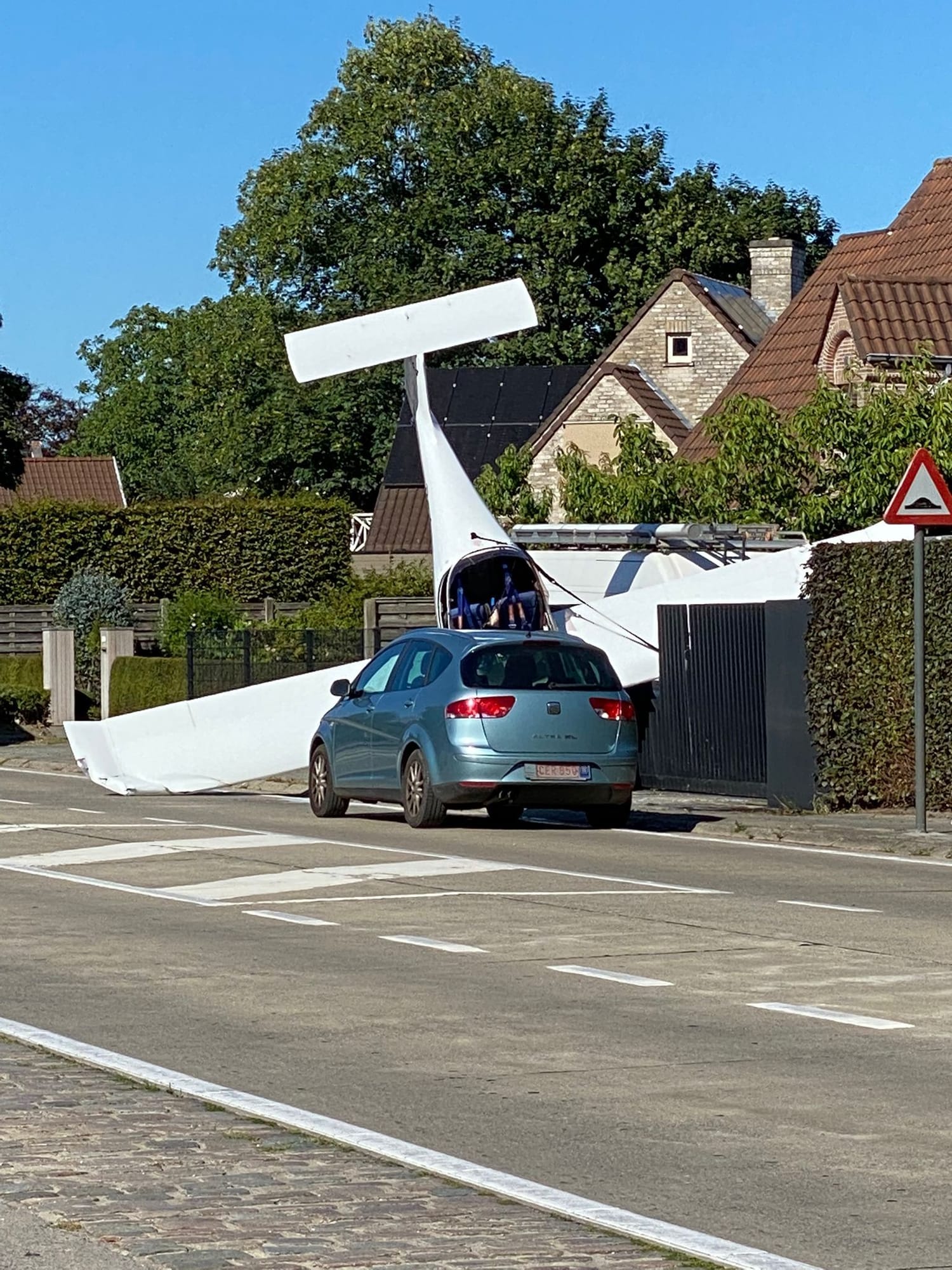SR22 down near Bruges, (BE) - BRS saved the day
Avoid imitations
Join Date: Nov 2000
Location: Wandering the FIR and cyberspace often at highly unsociable times
Posts: 14,576
Received 425 Likes
on
224 Posts
BRS is a great idea in situations like the one you found yourself in! Well managed, too!
Pegase Driver
Join Date: May 1997
Location: Europe
Age: 74
Posts: 3,694
Likes: 0
Received 0 Likes
on
0 Posts
Anyway good for you to have pulled out the BRS !
Avoid imitations
Join Date: Nov 2000
Location: Wandering the FIR and cyberspace often at highly unsociable times
Posts: 14,576
Received 425 Likes
on
224 Posts
But with a high wing aircraft you’re less likely to get trapped if the aircraft inverts.
A big difference between gliders and airplanes is that you have much more think time in a glider that can be applied to field and landing spot selection. Spoilers come in very handy in touching down at the best possible spot.
Join Date: Dec 2011
Location: Cambridge
Posts: 913
Likes: 0
Received 0 Likes
on
0 Posts
but is the Cirrus prone to get inverted ?

He died.
This is what happened to me:

I was unhurt.
Pegase Driver
Join Date: May 1997
Location: Europe
Age: 74
Posts: 3,694
Likes: 0
Received 0 Likes
on
0 Posts
@Jonzarno : Your 2 photos indeed show the difference. Very convincing . So pull the thing it will be . I rest my case .
Jonzarno Your photograph shows what appears to oil residue around the cowling where the prop boss is meant to be, and that it was blowing back along the fuse.
It seems to me quite possible that it would have - or did - have an impact on forward visibility through the screen? I should think this a factor in the decision to operate the 'chute - after all if you can't see where you're going, or you suspect that's going to get a whole lot worse, then it certainly won't assist in a 'normal' field landing.
Quite apart from that I wonder if you had a close look at the pointy end of the engine? Would be interested to know if you have any initial indication as to what let go.
FP.
It seems to me quite possible that it would have - or did - have an impact on forward visibility through the screen? I should think this a factor in the decision to operate the 'chute - after all if you can't see where you're going, or you suspect that's going to get a whole lot worse, then it certainly won't assist in a 'normal' field landing.
Quite apart from that I wonder if you had a close look at the pointy end of the engine? Would be interested to know if you have any initial indication as to what let go.
FP.
Thread Starter
Join Date: Jul 2009
Location: France
Age: 62
Posts: 98
Likes: 0
Received 0 Likes
on
0 Posts
Gliders are taildraggers. The main wheel is well in front of the center of gravity.
Training:
Glider pilots are drilled to do off field landings. Including spot full stall landing at min speed, slipping the plane (descending steeply without gaining speed), selecting fields (brown over green etc.), watching for the green islands indicative of power line masts, to name a few. Typical powered pilots are often lacking these skills.
Unlikely to end well without proper training. Such a deadly pulling stall while trying to stretch the glide shows lack of training in powerless flight: If you don't know when not to pull the stick pulling the BSR is clearly the better option.
Last edited by spornrad; 20th Nov 2022 at 09:28.
Join Date: Dec 2011
Location: Cambridge
Posts: 913
Likes: 0
Received 0 Likes
on
0 Posts
Jonzarno Your photograph shows what appears to oil residue around the cowling where the prop boss is meant to be, and that it was blowing back along the fuse.
It seems to me quite possible that it would have - or did - have an impact on forward visibility through the screen? I should think this a factor in the decision to operate the 'chute - after all if you can't see where you're going, or you suspect that's going to get a whole lot worse, then it certainly won't assist in a 'normal' field landing.
Quite apart from that I wonder if you had a close look at the pointy end of the engine? Would be interested to know if you have any initial indication as to what let go.
FP.
It seems to me quite possible that it would have - or did - have an impact on forward visibility through the screen? I should think this a factor in the decision to operate the 'chute - after all if you can't see where you're going, or you suspect that's going to get a whole lot worse, then it certainly won't assist in a 'normal' field landing.
Quite apart from that I wonder if you had a close look at the pointy end of the engine? Would be interested to know if you have any initial indication as to what let go.
FP.
2. I have a picture but, for some reason, it won't upload, here is a link to it:
https://share.icloud.com/photos/007Y...uknNn45mAemwcw
Last edited by Jonzarno; 20th Nov 2022 at 13:48.
Join Date: Mar 2001
Location: I wouldn't know.
Posts: 4,499
Likes: 0
Received 0 Likes
on
0 Posts
Training:
Glider pilots are drilled to do off field landings. Including spot full stall landing at min speed, slipping the plane (descending steeply without gaining speed), selecting fields (brown over green etc.), watching for the green islands indicative of power line masts, to name a few. Typical powered pilots are often lacking these skills.
Glider pilots are drilled to do off field landings. Including spot full stall landing at min speed, slipping the plane (descending steeply without gaining speed), selecting fields (brown over green etc.), watching for the green islands indicative of power line masts, to name a few. Typical powered pilots are often lacking these skills.
In my view that is the main point. If you are not trained and accustomed to always judging any ground you see in terms of ability to land on it or not, it is a huge missing puzzle piece. In my previous gliding club they had an engine failure at fairly low altitude on a refueling flight with their tow plane (no winch launches possible on their field, therefore towing is the only way). Full fuel load, not much time to check, low wing tricycle gear plane, Robin DR-300. They were able to find such a good landing spot that the engine could be swapped on the same field and the plane could be flown out of there after the swap was done (with proper authorization of course).
If one doesn’t have that skillset and the option of a BRS, of course it is the best option to pull it.
Jonzarno,
Well done, You were confronted with a serious emergency and you kept your cool, Devised a well thought out plan, under extreme duress and time constraints, and then executed it successfully.
You should be proud of yourself.
Well done, You were confronted with a serious emergency and you kept your cool, Devised a well thought out plan, under extreme duress and time constraints, and then executed it successfully.
You should be proud of yourself.
Last edited by Chiefttp; 21st Nov 2022 at 15:22.
By pulling BRS you prevent getting into the situation where shortly before touchdown you notice an ugly obstacle which might force you into a deadly mistake. That said it is not an easy decision to accept knowingly significantly damaging your plane by pulling the chute (confirmed by not few instances of planes with BRS that nonetheless fatally crashed).
High marks from me for decision making to the pilot in this case.






